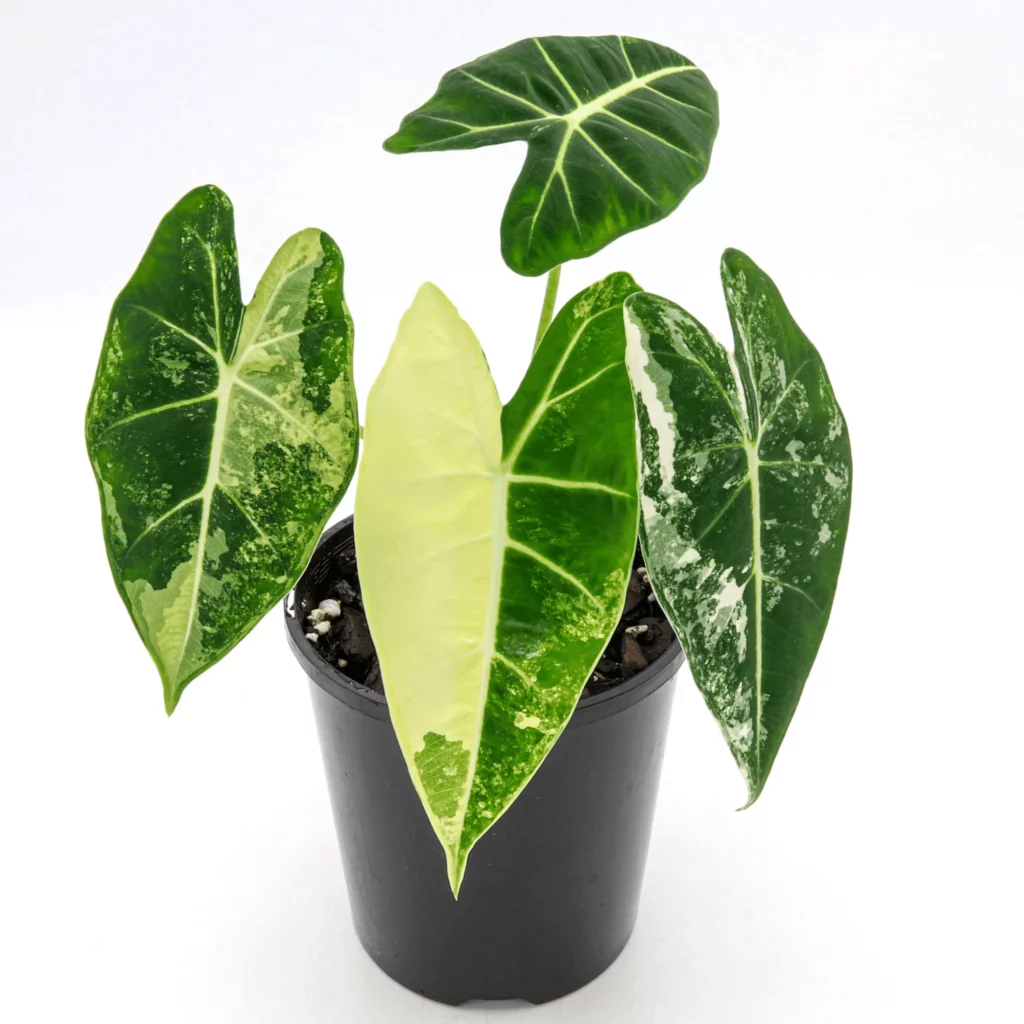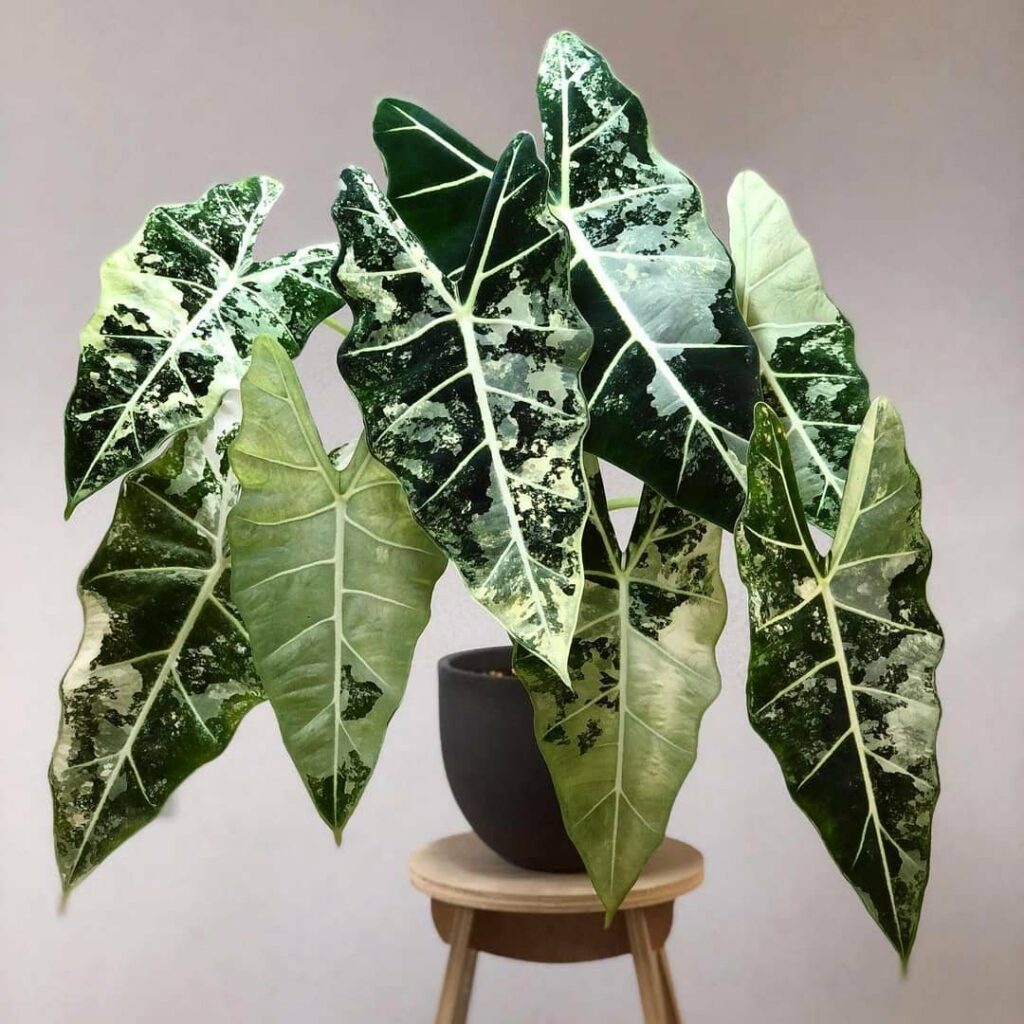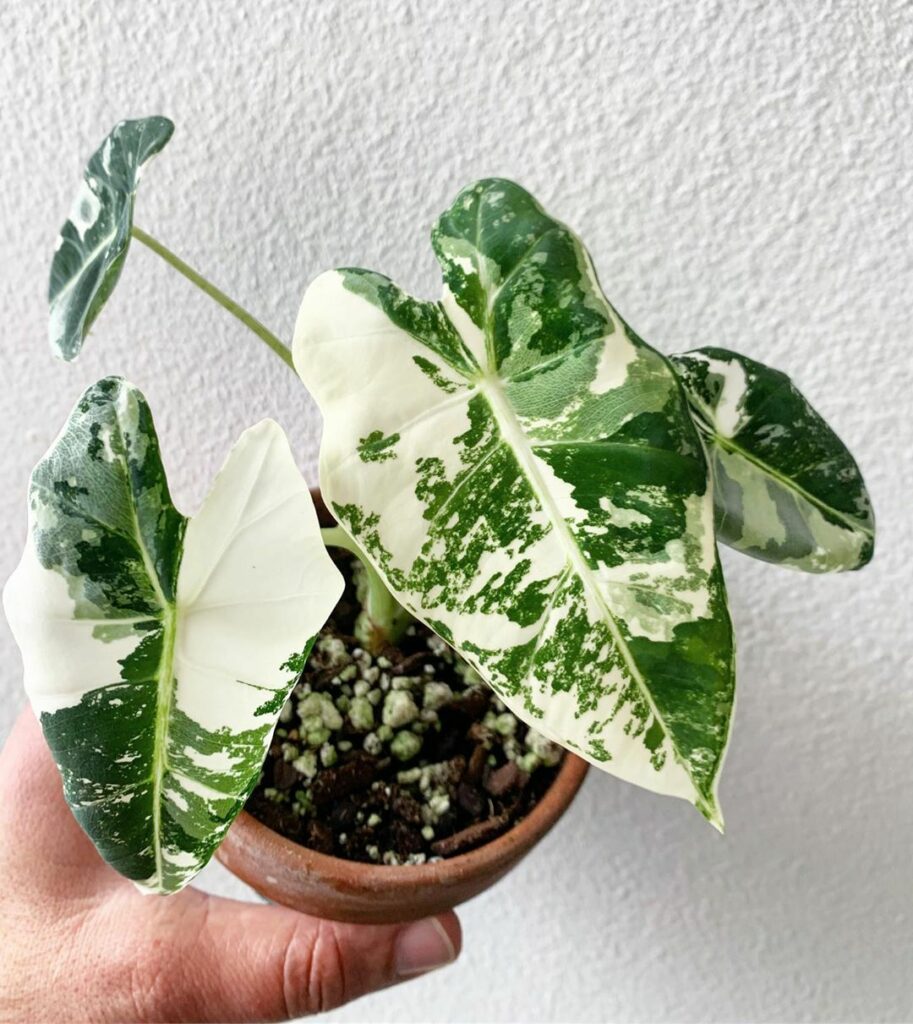Understanding the Alocasia Frydek Variegated
Introduction to Alocasia Frydek Variegated
Alocasia Frydek Variegated, colloquially referred to as the Green Velvet, is a magnificent ornamental plant that has captivated gardeners and houseplant enthusiasts alike. Hailing from the tropical regions, this plant's unique aesthetic and captivating variation make it a jewel in any collection. But what makes it so special, and how can you grow one of your own? This comprehensive guide will answer those questions and more.

Origins and History
Discovery of Alocasia Frydek
The Alocasia genus, part of the Araceae family, has over 80 species, many native to Asia's tropical and subtropical regions. The Alocasia Frydek specifically, with its striking dark green leaves and prominent white veins, is a hybrid species that has gained significant popularity among gardening enthusiasts.
Historical Usage
Throughout history, Alocasia plants have been utilized not just for their aesthetic appeal, but also for their culinary and medicinal applications. Although Alocasia Frydek's primary use today is as an ornamental plant, its cousins have served communities in diverse ways.
Identifying Alocasia Frydek Variegated
Physical Characteristics
Distinguishing Alocasia Frydek is straightforward, thanks to its unique physical attributes. The plant's defining features include its dark, velvet-like leaves, the notable variegation in the form of creamy white to silvery vein patterns, and the arrow or heart-shaped leaf structure. However, it's the variegated variety that really stands out with its splashes of white or lighter green on the leaf surface.
Variations and Similar Species
Several species resemble the Alocasia Frydek, but none match its unique blend of dark green and variegated foliage. Other varieties in the Alocasia family, such as Alocasia Polly or Alocasia Zebrina, also present striking patterns, but the Frydek's distinctive veining and texture are truly one of a kind.
For a deeper understanding of Alocasia's diverse varieties and their unique characteristics, explore "5 Stunning Alocasia Varieties."
See more list of the most popular houseplants
See more latest list of rare tissue culture plants
Growing Alocasia Frydek Variegated
Optimal Growing Conditions
Thriving in the tropics, Alocasia Frydek Variegated prefers high humidity, indirect sunlight, and well-draining soil. It's a plant that doesn't do well in cold temperatures or direct, harsh sunlight. Balancing these elements will ensure that your Frydek doesn't just survive, but flourishes.
Common Challenges and Solutions
While the Alocasia Frydek is undeniably stunning, it can be a fussy plant. Common issues include leaf yellowing due to overwatering, and brown leaf tips, a sign of low humidity. Maintaining an optimal environment, regular fertilizing, and careful watering can help mitigate these issues.
Learn more about cultivating Alocasia plants successfully indoors by referring to "5 Tips to Grow Alocasia Indoors."

"Discover the beauty of nature with our Alocasia Frydek Variegated! Click the link to bring this stunning, variegated wonder into your home today."
The Importance of Alocasia Frydek Variegated in Landscaping and Interior Design
Use in Landscape Design
In landscaping, the Alocasia Frydek variegated serves as an incredible focal point, lending a tropical flair to any garden. Its large leaves provide a stunning contrast against more conventional plants, creating a lush and vibrant scenery.
Use in Interior Design
The Alocasia Frydek variegated is not just a garden plant; it's also an exceptional interior accent. Its striking features serve as living art, bringing a piece of the tropics inside. It can enhance any room, provided it receives the right care and attention.
Conclusion
The Alocasia Frydek Variegated, with its unique, vibrant foliage, is more than just a plant—it's a statement. Whether nestled among other tropical plants in a garden or standing alone as a living piece of art in a room, it enhances its surroundings with an undeniable exotic appeal. Growing it can be a challenge, given its particular care requirements and sensitivity to changes in environment. However, when well-maintained, it rewards the gardener with a stunning display of nature's artistry.
Beyond the aesthetics, this plant ties us back to the richness of our earth's biodiversity, reminding us of the beauty inherent in our world's tropical regions. Whether you're a seasoned horticulturist or a houseplant novice, the Alocasia Frydek Variegated offers a delightful addition to your indoor or outdoor space.

Frequently Asked Questions
1. How often should I water my Alocasia Frydek Variegated?
Watering frequency depends on various factors like the size of the plant, the pot's size, the medium it's planted in, and the environment. As a rule of thumb, wait until the top inch of soil is dry before watering again. Overwatering can lead to root rot, which is detrimental to the plant.
For detailed insights on watering and maintaining the health of your Alocasia, read "5 Must-Know Tips for Growing Alocasia."
2. Does the Alocasia Frydek Variegated require direct sunlight?
No, the Alocasia Frydek Variegated prefers bright, indirect sunlight. Direct, harsh sunlight can cause the leaves to scorch or lose their vibrant color. Placing it near a north or east-facing window typically provides ideal lighting conditions.
3. Why are the leaf tips of my Alocasia Frydek turning brown?
Brown leaf tips usually indicate a lack of humidity. Alocasia Frydek Variegated thrives in high humidity environments. Consider increasing the humidity around the plant by placing it on a tray of pebbles filled with water or using a humidifier.
4. Is the Alocasia Frydek Variegated plant pet-friendly?
No, it's essential to note that Alocasia plants, including the Frydek Variegated, contain calcium oxalate crystals, making them toxic if ingested. Keep them out of reach from pets and small children.
5. Can I propagate my Alocasia Frydek Variegated?
Yes, you can! The most common way to propagate is by division. This involves separating a section of the mother plant, including roots, stem, and leaves, and replanting it. The best time to propagate is during repotting in the warmer months.
https://greenboog.com/alocasia-frydek-care-history-guide/
Nhận xét
Đăng nhận xét